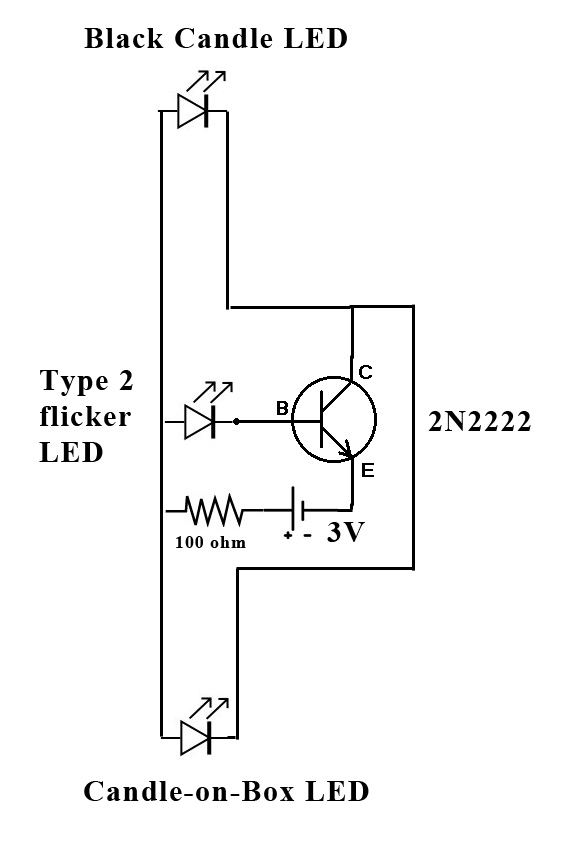The candle on top of the box is connected to a quarter-scale servo (Hitec 805BB, a relatively strong servo). This would be visible if the kids walked up close, but since they are sitting several feet back, they can not really see the servo. I put teflon skids on the bottom of the candle platform to let it slide easier. The candle itself is really just a cut piece of PVC pipe with some candle wax on it and a yellow LED hooked up to a flicker circuit.
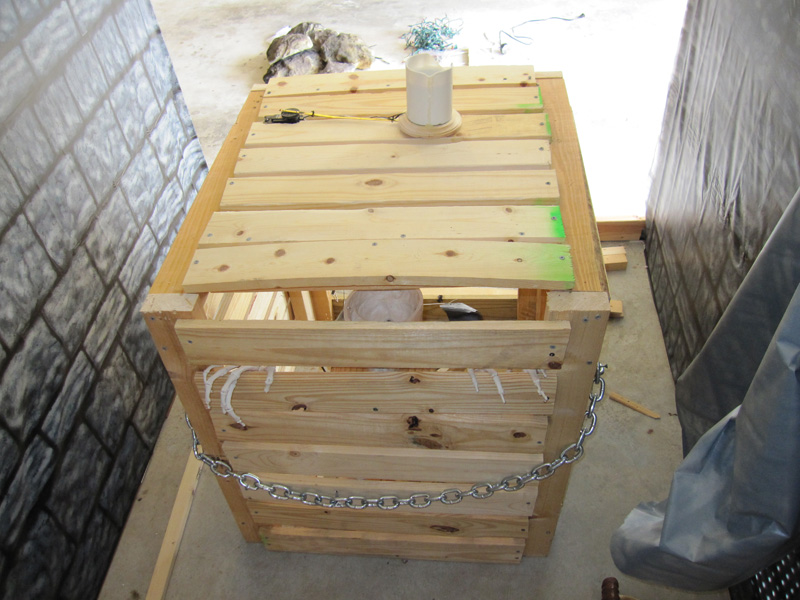
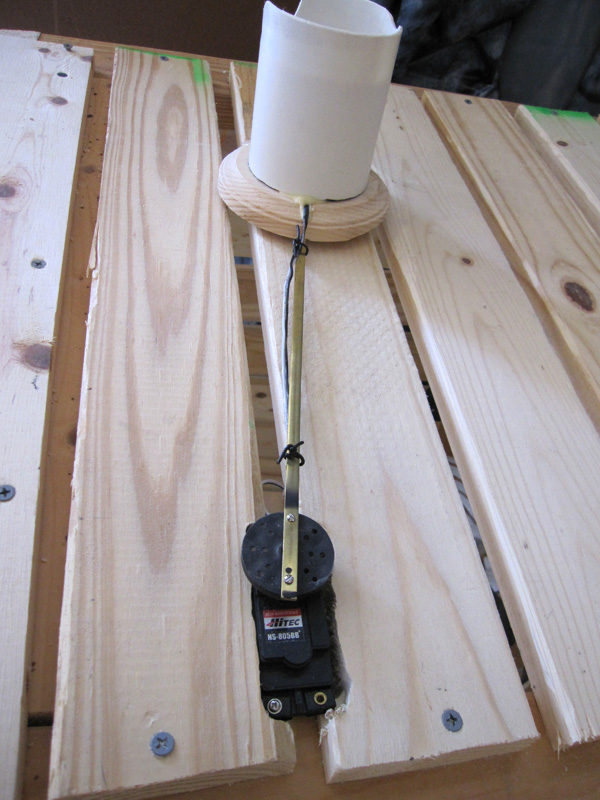
Those wires you see running down the arm are the wires to the LED. Why not just throw a flicker candle in the PVC pipe and be done with it? Well, I wanted the candle light to flicker off my ghost. So, I needed to coordinate the "random" flickering of this LED with another LED in the ghost control area. So, I have two LEDs separated by several feet that are flickering simultaneously.
Below is a shot of the "ghost control" area. It doesn't look like much but it is precisely placed in the garage to be equal distant from the shrink film shim as the box. Those front panels are the same height and wide as the front of the box and that black candle is the same height from thru floor as the candle on the box. You can see three things in this shot.The first are the black curtains in the back. This hides the ghost actor until he is ready to make his sudden appearance by brushing the curtains aside. The second thing are the two smaller panels are on hinges and has a contact switch between them. Again, those panels correspond to the front of the box in the ghost viewing room and are the same height as the box. They hide the lower half of the ghost when he is "behind the box". When the ghost is ready to walk through the box, the actor kicks open the panels one at a time, giving the illusion that the ghost's legs are passing through the front of the box and appearing. The makeshift contact switch between the two panels will also break contact when this happens and will signal the servo connected to the chain to kick. Thus, as the ghost walks through the front of the box, not only does its legs appear but the chain moves as if he kicked it. Again, the chain effect got ditched at the last minute because my servo was too week for the effect. The last thing I want you to notice is that black candle floating in the center there. That corresponds to the candle on the box.
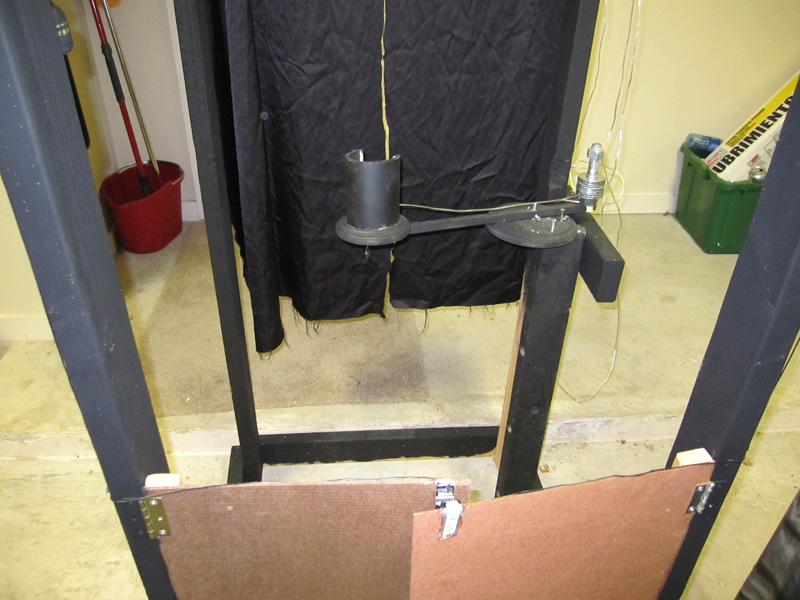
The shaft holding the black candle is attached to a 100K ohm potentiometer. The candle can rotate around the shaft of that potentiometer, essentially working as a giant dial. The big washers on the back of the arm is a counterbalance and you can see two wood screws on the circular plate. Those screws restrict the rotation of the system so that you can control the start and finish positions on the potentiometer. That wire you see running to the black candle powers an LED. This is the second LED hooked up to the flicker circuit. You will notice that the back of the candle is open. That way the flicker light hits the ghost, but you cannot see the actual LED reflected in the shim. I should have used a few LEDs here instead of just one because the flicker off the ghost was barely noticeable.
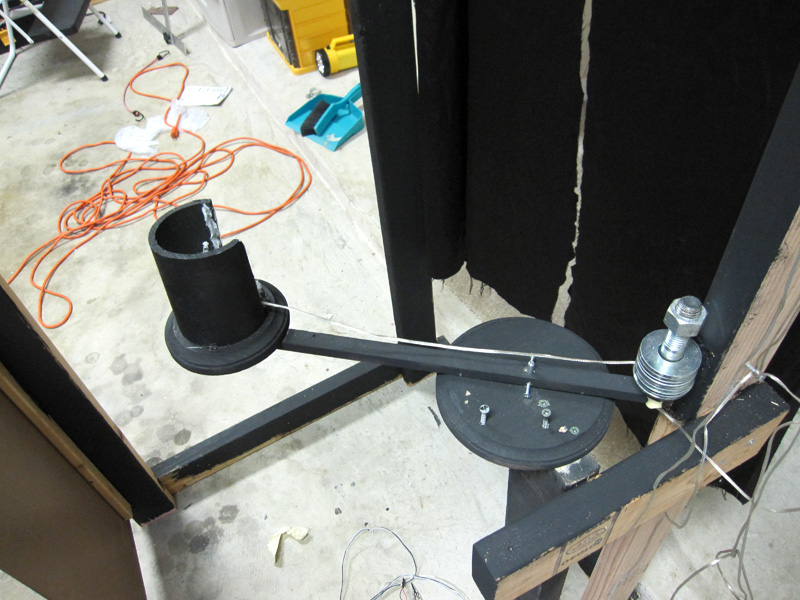
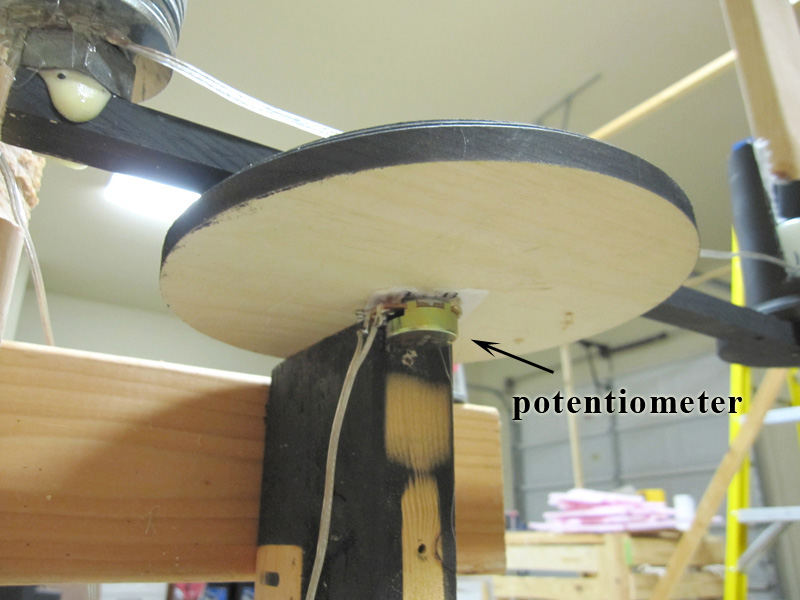
I found the servo controller circuit here. I the potentiometer you see above is the 100K pot shown in the schematic. I also replaced the 56K resistor with a 100K trim pot. I wanted a perfect correlation of the movement of the black candle with the movement of the candle on the box. Adjustments at the trim pot help to get these to match but it wasn't perfect. For the illusion, however, it worked just fine.
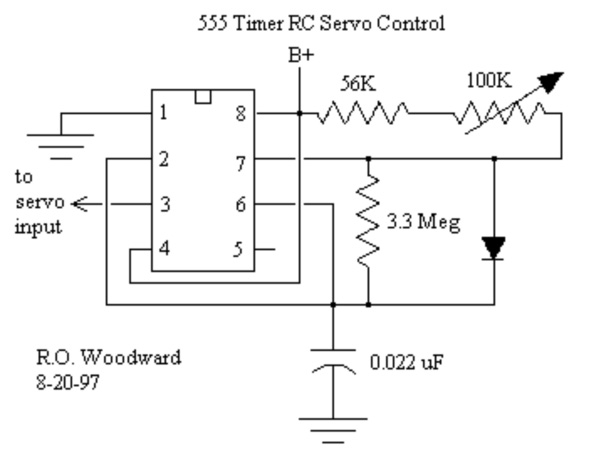
Here is a short video of the setup. You can hear the candle on the box moving when I move the black candle.
And one more showing the candle motion. You can see that there is a lag between the black candle movement and the candle on the box, but you can't really notice it in the actual effect so I didn't try very hard to fix that. The first time I walk through in the video, the front panels were open so you could see my legs the whole time. The second time I closed the panels for the full effect (though I kicked them pretty hard. I was quieter about it on Halloween).
An easy way to create a flicker circuit is described here. I, of course, used longer wires. Here is a schematic. A type 2 flicker LED is an LED with the flicker capability built in to the LED itself. I found mine at a dollar store (LED tea lights that I cut the LED out of). If you don't want to hack a tea light, you can often find the loose LEDs online at places like allelectronics.com
